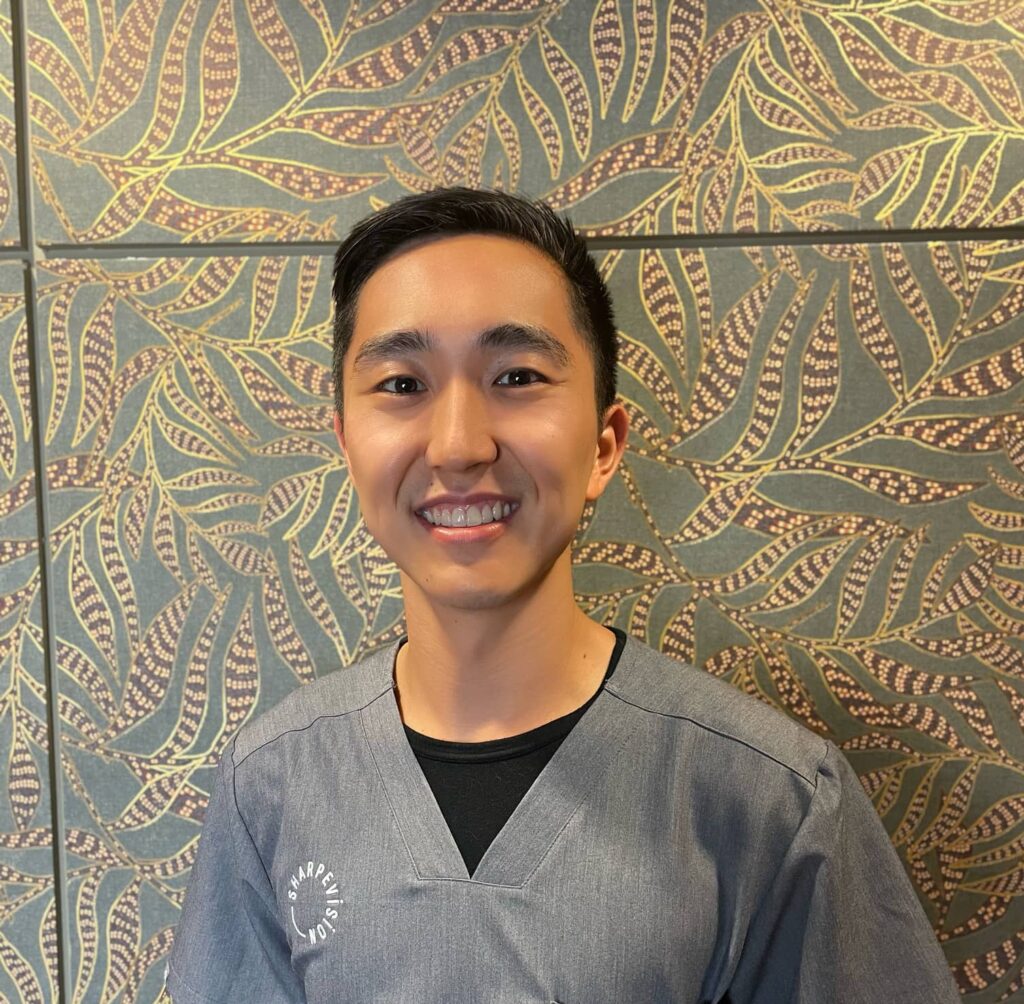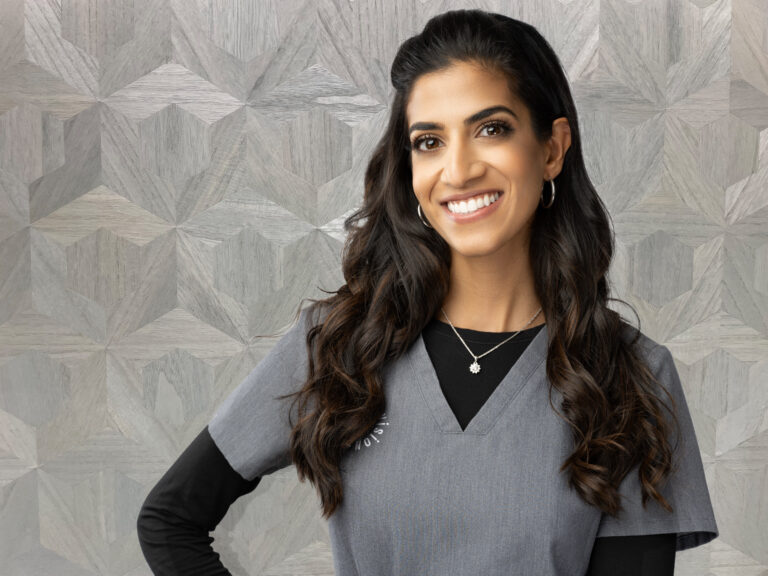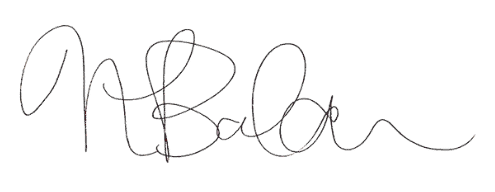Getting Personal: Have you had Surgery Yourself? Dr. Alex Kim


February 13, 2023
Welcome back to the blog! One of the most humbling and important questions our patients ask us is “Have you had surgery yourself?” In a sense, we’re being asked if we personally believe in the work we do. The answer? A resounding yes! Most of our doctors, staff and their loved ones have all had one type of procedure or another.
To give our patients the full inside scoop, we decided to “get personal” with SharpeVision’s very own Dr. Alex Kim, who had his EVO procedure in 2022. Keep reading for Dr. Balani’s interview with Dr. Kim as he shares all the details about his personal experience with ICL:
Why did you choose to have eye surgery?
“I think I just got to a point where I was tired of the constant maintenance. When traveling, I’d forget to pack spare contacts/solution/cases an embarrassing amount. My eyes always dried out in contacts by the end of the day, and I was still spending close to $1000 a year on glasses + contacts. I pushed it off for quite a while, but eventually, enough was enough.”
What about ICL appealed to you most?
“The main benefit is that there is very minimal tissue disruption. Instead of reshaping the cornea, the surgeon just makes a small incision, slides the lens in, and seals the incision. Quick and easy. This results in reduced post-operative side effects and a lower chance of regression over time. Could I have done LASIK? Sure. Would I have been fine? Probably. But knowing myself, I would’ve been in a mild, but constant, state of worry until full recovery.”
What was ICL surgery like? Were you scared?
“The actual surgery wasn’t bad at all! They gave me a ton of numbing eye drops and a mild anesthetic to make sure that I was as comfortable as possible. I wasn’t unconscious though, as I had to keep my eyes focused straight ahead. For those who are worried about accidentally blinking at the wrong times, they have tools to help keep your eyelids open as well. I was a bit nervous going into the operating room, but honestly, the anticipation was more nerve-wracking than the actual procedure.”
When did you have surgery; how did you know you were ready?
“I had the surgery done in May of 2022. I knew the time was right when my prescription stabilized, which tends to happen somewhere in our 20’s. Hypothetically, if we do surgery on someone whose vision is still changing, it can potentially get blurry again after a few years which defeats the whole purpose!”
What was the recovery like? Did it hurt? When were you able to see?
“The recovery was easier than I expected! As a reluctant member of the Young Healthy Male club (notorious for our low pain tolerance) I can safely say I did not experience any pain. Within 15 minutes after surgery, I was able to read the clock across the hall. I had quite a lot of halos and glare at first, but as I gave my eyes time and medicine, my vision improved and the halos faded day by day. Something that I tell all our patients though, is that the halos don’t disappear entirely, but get to a point or rarity where it doesn’t bother you. Personally, I usually only notice them when it’s dark and I’m tired or stressed, but it has never once impacted my ability to drive at night.”
If you could go back, would you pick ICL again? “Without a doubt!”
Who do you think are good candidates for ICL surgery and what might make someone not a good candidate?
“Technically, anyone who is moderately nearsighted (-3.00 and up) can qualify for the ICL. However, we find the best candidates are those who are highly nearsighted (-8.00 and up). This is because there has to be enough room in the eye for the lens to physically sit safely. With higher degrees of nearsightedness, the eyeball itself is longer, which usually translates to more room for the lens. On the other hand, farsighted patients are not good candidates because the eyeball is slightly shorter, most likely resulting in inadequate space.”
How has ICL changed over the years? What does Visian, EVO, and EVO+ mean?
“The standard Visian ICL (V1) was the first generation lens that received its CE mark in 1997. Since then, the lens has undergone incremental modifications all improving safety, reducing side effects and optimizing outcomes. Newer versions offer astigmatism correction, UV protection and eliminate the need for a laser peripheral iridotomy (LPI). Version 5 (V5) is the latest EVO+ model and it is used for all patients with a prescription of -14.00D and below. If you opted for ICL, chances are the V5 would be selected. All EVO ICLs carry the central port design, but the EVO+ has a slightly enhanced, larger optic zone to improve the quality of night time vision. For prescriptions -14.50D and above, the V4c (EVO) is used. Essentially, as minus power increases beyond -14.50d, the optic size must decrease.”
Best piece of advice for a patient thinking about EVO ICL?
“It’s always helpful to read up on the procedure and do some homework, but sometimes Dr. Google is a dark rabbit hole to go down. The best thing to do is go in for a consultation and get a thorough explanation by a trained specialist. The worst that can happen is that they say you are not a candidate!”
Thank you so much Dr. Kim, we so appreciate you taking the time to share with us! With the evolution of technology, exceptional safety profile and impressive outcomes, the EVO ICL has continued to gain traction in the last decade. We’ve seen celebrities from all over the world choose EVO for their vision makeover – Joe Jonas, Max Struss, YooA, Peyton List, and just like Dr. Kim’s, these success stories serve as a testament to just how amazing the technology of EVO really is.

Dr. Natasha Balani
